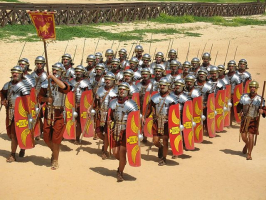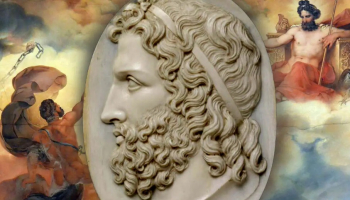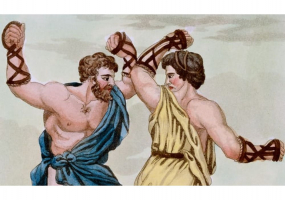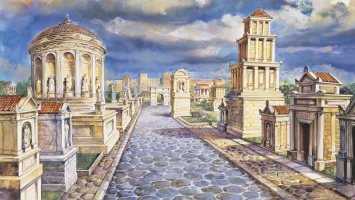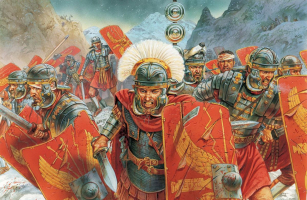Top 3 Famous Shields Were Used By Ancient Roman Army
Roman battle tactics were among the most original and inventive strategies used by the Romans. The weaponry, armor, shields, and battle strategies used by the ... read more...Roman army and soldiers were all distinctive. The Roman army's use of distinctive and useful shields contributed significantly to their many military successes. They were primarily composed of wood, which was shaped into a variety of forms. Despite possessing a large number of shields, the Roman troops chose the Legionnaire Scutum, Clipeus, and Parma shields because of their strength. Here is detailed information about the three famous shields used by the Ancient Roman Army.
-
The most famous shield used by the Ancient Roman Army in practically all conflicts was the Legionnaire Scutum. This shield was initially used by the Italic Antiquity before being adapted by the Roman army in the fourth century. The shield's shape was different from the shapes used in later times. The shield was originally round and flat, but after the conquest of Britain in 43 AD, it evolved into a rectangular and curved design.
Initially, the shield was built of a single layer of wood, making it easy for the enemy to poke through it and harm the Roman army. In the course of the Roman campaign against Dacia and Carthage, a sizable portion of the Roman Army suffered injuries. Since then, two to three layers of wood have been added to create the shields. To give the flat wood a curve shape and shield the army from all sides, more strips of wood were joined with adhesive from the sides.
The leather and a piece of linen fabric with a beautiful design on the front would be placed over the layers of wood. The metal lightning bolt or the wings of an eagle were the most prevalent prints on these shields. The lightning bolt would stand in for one of the old Roman gods, Jupiter, the King of God, while the eagle's wings would represent the Roman army.
Scutum was designed specifically to defend foot soldiers from all sides. The Testudo Formation, one of the Roman battle tactics, was where the troops employed this shield the most. They would carry the shield and position themselves on the top and front. The shield was powerful and could defend the soldiers from all sides, but it was heavy and difficult to maneuver with the hands. Its measurements were 105.5 cm in height, 41 cm broad, and 30 cm deep, and it weighed between 5.8 kg and 6.8 kg.
The senate honored Emperor Augustus, one of the greatest Roman emperors, with the golden scutum in 27 BC for his crucial role in putting an end to the civil wars and rebuilding the republic. However, just one intact piece of Roman scutum was discovered at Dura Europos, one of the Roman forts in Syria.
Photo: Outfit4Events 
Photo: HistoryNet -
The enormous shield known as Clipeus, which was used by both Greeks and Romans, was supposedly invented by Proetus and Acrisius of Argos. As a result, it was given the name Clipeus Argolicus and was related to the sun. Other sources, however, claim that the Greeks got their shield and helmet from the Egyptians.
The shield used before the Scutum was called Clipeus, and it was modeled after the Greek Aspis. It was a large, spherical shield that the Roman troops wore as a form of protection. To defend the army and hurt the adversary during fights, the umbo, an iron bolt with a sharp point, was placed in the middle of the shield. This shield was employed by slinging it over the arm and deflecting opposing strikes. The Roman Empire and the early Republic saw the most widespread use of the shield. It served its purpose well before the Scutum took its place.
The heroes of Homer need to carried this shield because it is big enough to protect the full man. Sometimes it was made of wood or wicker that had been twisted together into osiers; the wood or wicker was then coated in multiple layers of ox hides, and ultimately the edge was bound with metal (Hom. Il. XII.295). A projection in the center of the shield functioned as a type of weapon on its own or caused hostile missiles to deflect from the barrier. The next woodcut depicts it as seen from the Trajan's column.

Photo: Flickr 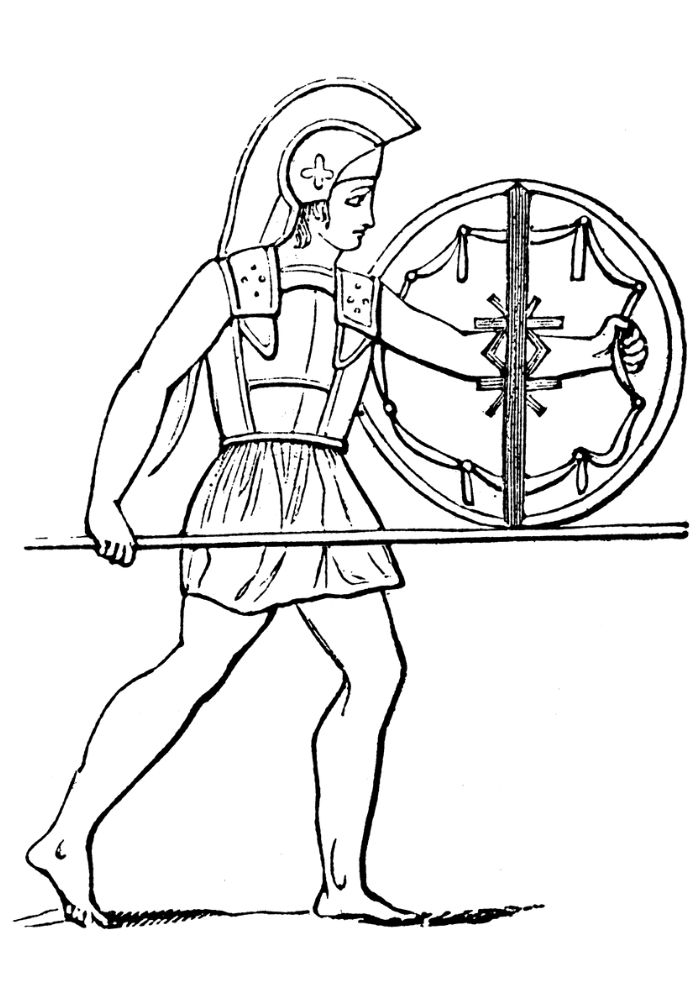
Photo: Florida Center for Instructional Technology - University of South Florida -
Around the end of the Imperial Roman period in the third century, the famous shield used by the Ancient Roman Army is Parma. Parma was also known as Parmula. To fend off an enemy onslaught, it was framed with iron.
Roman Gladiators, particularly the Thraex Gladiators, and auxiliary infantry and cavalry during battles were the principal users of the shield. The Signifiers, also known as the Legion's standard bearers, would normally carry the circular Roman Parma shield into combat. Skirmishing soldiers in an army, most notably the Velites of the Republican Era Legions, might also use smaller, rounder shields.
The Parma shield, in contrast to other Roman shields, was renowned for uses other than battle and campaigning. It was carried by the Roman flag bearer and utilized in the Pyrrhic dance, a well-known Greek dance genre. This Parma Shield is made of heavy poplar wood, bound with closely fitting linen, and hand-painted. The shield has a sturdy hardwood bar grip and riveted brass border around the edges. The Parma is complete with a brass shield boss.

Photo: Dark Knight Armoury 
Photo: Historical Clothing Realm





